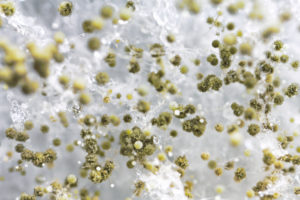Mold – an Indoor Toxin that Loves Winter

Mold Loves the Winter
If a cold winter morning makes you want to stay curled up in bed under the covers, you are not alone. Toxic mold loves being indoors during the winter months, too. The ideal environment for mold is a warm humid environment. Ice dams form on the edge of roofs during cold weather and prevent water from properly draining off the roof and away from the building. That is just one of the many ways water can enter a building and cause mold growth during winter months. The mold removal NYC experts at Stern Mold can help regardless of the cause of indoor mold.
Sweating windows can cause mold
Condensation on and around windows is a common issue that appears harmless. When the outside temperature is significantly colder than the indoor temperature, the moisture in the warm interior air will liquify when it comes in contact with the glass surface of windows. Insulated windows are less likely to sweat. If you do have some windows that get condensation from time to time, dry the area regularly to prevent moisture from spreading to the wood and drywall around the window. Mold can grow inside walls and the microscopic mold spores can find their way into the air you breathe every day.
Mold can be quickly and effectively eliminated
Traditional mold remediation methods are expensive, messy, and time-consuming. The MoldExterm method is less costly, quicker, and comes with a comprehensive mold-free warranty. Be proactive about protecting the health of your family and employees by calling the mold removal NYC experts at Stern for a free mold inspection. Most mold treatments can be completed in less than a day.



